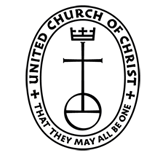“Where Two or Three are Gathered” – Sermon on May 26, 2013
Scripture – John 16: 12-15 May 26, 2013
Jesus said, “I have yet many things to say to you, but you cannot bear them now. When the Spirit of truth comes, that Spirit will guide you into all the truth; for the Spirit will not speak independently, but will speak only what the Spirit hears and will declare to you the things that are to come. The Spirit will glorify me, by taking what is mine and declaring it to you. All that God has is mine; therefore I said that the Spirit will take what is mine and declare it to you.”
Sermon: Where Two or Three are Gathered
by Rev. Doreen Oughton
Today is Trinity Sunday, a day we celebrate the great mystery of three in one – Creator, Redeemer, Sustainer; Father, Son and Holy Spirit. Fun, fun and more fun. The Christian confession of God is as One, yet three separate and distinct persons, of one will, of equal standing – a model of mutuality in which each personal identity exists only in relationship. The readings for today highlight this sense of relationship. Sophia, or Divine Wisdom, talks about how she has been with the Creator, has been the delight of the Creator from the beginning of creation. Jesus talks about how everything that God has is his also, and that the Spirit will take what is theirs and declare it to us. Things pass from one to another, not down, but around. Delight, wisdom, knowledge, love – belonging to each, shared with all.
It is a difficult concept to think through, and we are invited to appreciate the mystery of it rather than analyze it into submission to our minds. Thank goodness, because I don’t think I’d be up to the task of explaining it. And yet the idea of it, the divine truth of it is so beautiful and inspiring, it is worthwhile to try to give some expression of it. And so I will share some words or ideas of others, that may lead to an opening for you, not necessarily in understanding, but in a sense of awe, wonder, worship and gratitude.
I loved this reflection by the Rev. Charles Robertson. He says, “In John’s Gospel, we hear Jesus pray that his disciples may be one “even as the Father and I are one.” This is not the language of form and function; no, this is the language of relationship, the language of mutual devotion. We can speak of God in terms of shared love, a community in which that love is expansive and generous. It is love that cannot be self contained. It overflows from Parent to Child to Spirit and back again. The love of God, the love that IS God is like a divine Dance, a dynamic and graceful and deeply intimate movement. In this movement, the God who is “I AM” is not alone, never alone, for the very essence of God is relationship. This is far different from those mythological deities of old who were always fighting with one another, rivals and annoyances of one another. No, what we see in the Trinity is a dance of Persons who are mutually affirming, mutually caring. For the very essence of God is relationship, community, unconditional love.”
He goes on, “It is even more remarkable then that God, who in this Dance needs no other, did choose to create and redeem a people–no, even more, chose to create and redeem you, me, each and every individual we encounter–so that we might join in this Dance.”
Another book I read talks about the difference between sublime relationships – those that are lofty, grand and noble – and more coarse relationships. It says, “the sublime relationships are always triune in nature. Triune reality is God’s signature, the divine pattern. The three-in-one is everywhere found in the realms of the sublime. You cannot escape it in matters dealing with time and space, God and consciousness, or any of the subtle relationships.”
Can you see this? What is the 3-in-1 in the way we talk about time – past, present and future. And likewise what is the 3-in-1 of our perception – before, now and after. What is the 3-in-1 of space – here, there and the space in between. What is the 3-in-1 of our being – mind, body and soul or spirit. Psychiatrists speak of the id, ego and super-ego; scientists see energy, matter and ether. Philosophers say something is not true unless it is true in thought, word and deed.
In contrast, with more coarse relationship, we do not see an in-between – they are always dyads, opposites – left-right; up-down; hot-cold, fast-slow, big-small. Things are seen one thing or the other, or as it is in comparison to either polarity. In this realm, we can only experience a thing by knowing its opposite – good-bad, right-wrong, true-false. But in the sublime realm, there are no opposites. All is One, and everything progresses from one to the other in a never-ending circle. Life and death are not opposites, but different facets of existence. Likewise giving and receiving and having are of a whole, a cycle. And this, this is the nature of God – not contrasts – not jealous/loving, wrathful/rewarding, meek/powerful, controlling/removed. No, God is the lover, the beloved, and love itself. God is the spring, the fountain, and the flowing river; the thought, the word, and the breath that forms it.
And this triune nature is not just what God is within the Godself, but is how God is present for and interacts with his creation. God is faithful, loving Father, servant Son and enlivening Spirit. Just as the three parts of God indwell with each other, make room for one another; so God indwells in us, is hospitable to us, makes room for us, for all of us. And could it be that we, created in God’s image, are called to likewise indwell with one another, make room for one another, understand a shared purpose in this world, treat one another as equals.
God is about relationship, and Christ’s salvation work was about relationship reconciliation. Jesus is understood to have come to reconcile us to God; to ourselves / one another; and to the rest of creation. Doesn’t that sound like a wonderful mission to continue as the new body of Christ – to focus on nurturing relationships with the divine outside of us – God and nature; the divine within us; and the divine between and among us. Can we be the faithful sustaining center from which new ideas bubble up and are then put into action? Can we explore together the Triune mystery that can be found right here, out there, and in the space in between? May it be so.








